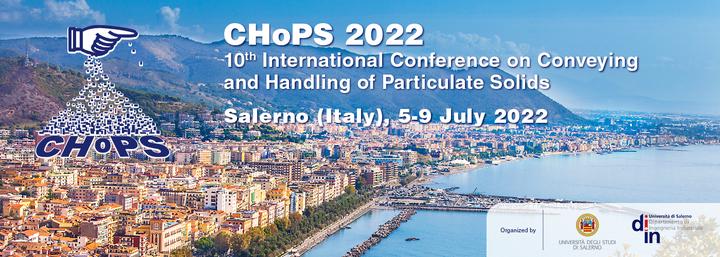Modelling Particle Breakage Using a Bonded Particle Model
 Image credit: CHoPS
Image credit: CHoPS
Abstract
Particle size reduction, either intended or through damage, is a process that is common across a wide range of industries. Whether intended or not, the effect of this breakage can be significant and predicting the breakage process in simulations can be a challenge. The Discrete Element Method (DEM) has seen a significant increase in usage in recent years due to advance in both the underlying hardware being more capable and through advances in the modelling techniques. However, despite these advances the inclusion of breakage in DEM is still in its infancy due to the significant computational cost and simplicity of proposed methods. Several techniques have been proposed such as the Bonded Particle Model (BPM), Particle Replacement Method (PRM) and Discrete Grain Method (DGM).
The Particle Replacement Method (PRM) instantly replaces a particle with a predefined size distribution of child particles once the failure criteria are met for that particle. This is typically a single maximum compressive force, but more complex failure criteria can be implemented. This method suffers from and inability to incorporate natural breakage patterns (chipping, splitting, etc.) and does not account for weakening from repeated loading events. A BPM approximates the material as a bonded DEM particle fabric at a suitably chosen particle length scale which gives a greater degree of freedom in simulating smaller and irregular-shaped fragments. This method does not impose any predetermined limitations such as failure planes or crack initiation points and allows the model to be used to study the complex phenomena that arise in breakage.
This study investigates the effectiveness of the BPM at simulating particle breakage and predicting the breakage size distributions. A rigorous Beam Bond Model is utilised to form the bonded fabric. The study demonstrates that the BPM model is capable of capturing breakage phenomena under both static and dynamic loading conditions and can be used to study damage due to varying levels of impact velocity and cumulative damage from repeated loadings. By tracking the development of bond breakage, the evolution of crack propagation through the material can be visualized.
Slides can be added in a few ways:
- Create slides using Wowchemy’s Slides feature and link using
slidesparameter in the front matter of the talk file - Upload an existing slide deck to
static/and link usingurl_slidesparameter in the front matter of the talk file - Embed your slides (e.g. Google Slides) or presentation video on this page using shortcodes.
Further event details, including page elements such as image galleries, can be added to the body of this page.